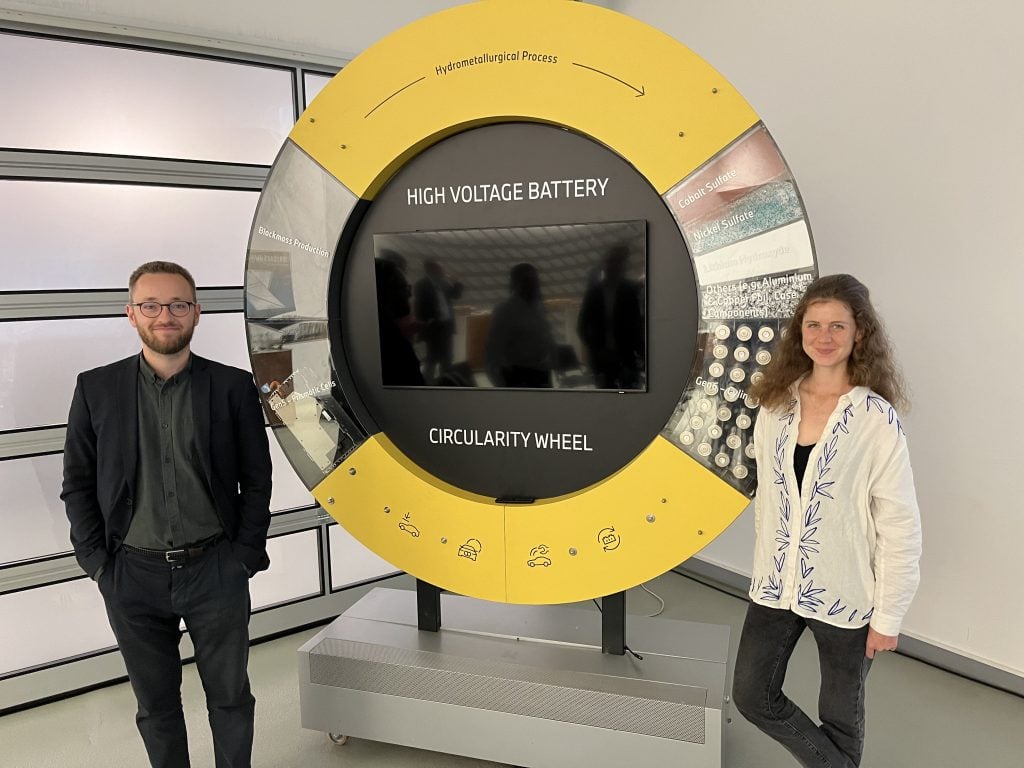While climate change and biodiversity loss are urgent global challenges, the transition to a low-carbon economy involves more than just overhauling our energy systems. In today’s take-make-waste economy, most companies struggle to grow without expanding their environmental and material footprints. As the automotive industry accelerates towards sustainability, leading manufacturers have to go beyond the strategic shift to EVs and have to stand out as pioneers in circular manufacturing. But the question remains: Can they close the loop quickly enough?
In a world increasingly threatened by climate change and resource scarcity, transitioning to a low-carbon economy is more critical than ever. A closer look at the UN Sustainable Development Goals and planetary boundaries reveals that our current rate of resource consumption jeopardizes the planet’s ability to provide us with a livable habitat.
However, this shift goes beyond clean energy – it calls for a complete rethinking of our economic model. Enter the circular economy: a framework designed to maximize the value of goods and materials for as long as possible, effectively decoupling economic growth from resource consumption.
The Circular Challenge in Automotive Manufacturing
The automotive industry faces a unique set of challenges in transitioning to a circular economy. As the world moves away from traditional internal combustion engines toward electric vehicles (EVs), the demand for critical materials is expected to rise. EVs require higher quantities of these scarce resources, putting pressure on supply chains and underscoring the need for more sustainable practices.
The most progressive manufacturers not only recognize this challenge but set ambitious goals to recover vehicle’s components and materials. This effort isn’t just about minimizing environmental impact; it’s also a strategic move to ensure supply chain security and comply with increasingly stringent regulatory requirements.
Inside an Automotive Recycling Facility
Recently, our team conducting research and ESG analysis for Nordea Asset Management, had the opportunity to visit a recycling facility of a major automotive manufacturer. The visit provided us with an exclusive, behind-the-scenes look at how one of the world’s leading automakers is embracing circularity in its operations.
During our site visit, we saw firsthand the labor-intensive process of dismantling vehicles to recover reusable parts. The facility we visited currently processes a modest number of cars annually—a modest figure considering BMW sold over two million vehicles in 2023.
What stood out most is the need for a long-term vision. BMW is working to simplify vehicle design by standardizing the use of fewer materials for similar components. This “design-for-recycling” approach incorporates end-of-life considerations into the development of new models, tackling one of the major challenges in automotive recycling: the complexity of modern vehicles.
The Road Ahead: Opportunities and Challenges
Investments in circularity go beyond recycling; it’s about gaining valuable insights that could position companies as leaders in a more sustainable industrial and automotive future, extending beyond electrification. The integration of circularity principles into the design and development phases is particularly promising, as it has the potential to enhance the entire product lifecycle.
However, challenges persist. There are not many industrials or automotive manufacturers that have built recycling facilities and current capacity at those facilities underscores the significant gap that needs to be closed in order to achieve meaningful improvements in material circularity. The process remains highly manual and labor-intensive, highlighting the urgent need for innovation in recycling technologies.
The Bigger Picture: Circularity as a Business Imperative
These efforts of the circularity leaders in the automotive industry reflect a broader trend across several sectors. The circular economy is increasingly recognized not only as an environmental necessity but also as a business imperative. With scarce resources, volatile commodity prices, and geopolitical tensions threatening supply chains, circular practices provide a way to de-risk operations and create new business opportunities.
From a financial perspective, circularity initiatives often require substantial upfront investments but can deliver long-term economic benefits. Embracing circularity is increasingly viewed as essential for long-term financial sustainability in resource-intensive industries like automotive manufacturing.
Additionally, the circular economy aligns with the UN Sustainable Development Goals and addresses the urgent need to operate within the planet’s boundaries. As consumers and regulators demand more sustainable products, companies that lead in circularity may gain a significant competitive advantage.
Accelerating the Circular Transition
While initiatives by leading automakers like BMW are commendable, our visit underscored the need for accelerated progress. We encouraged BMW to scale their recycling and reuse processes more quickly, acknowledging the long lead times often associated with circularity initiatives.
Looking ahead, it’s clear that the circular economy will play a crucial role in decoupling economic growth from resource consumption. For automotive companies, and businesses across all sectors, embracing circularity isn’t just about environmental responsibility – it’s about securing a more sustainable future in a resource-constrained world.
World Circular Economy ForumThe World Circular Economy Forum (WCEF) showcases the world’s leading circular economy solutions with business leaders, policymakers and experts attending from around the world.

Till Jorde, Sr. ESG Analyst and Solène Eveillard, Impact Lead, at BMW’s Recycling and Dismantling Centre near Munich Germany.
They are standing beside BMW’s Circularity Wheel, which represents BMW’s commitment to the circular economy in battery production. It depicts the lifecycle of high-voltage batteries, from raw material extraction and production to recycling and reuse. This interactive display highlights the hydrometallurgical process and the recovery of valuable materials emphasizing BMW’s work to reduce environmental impact.